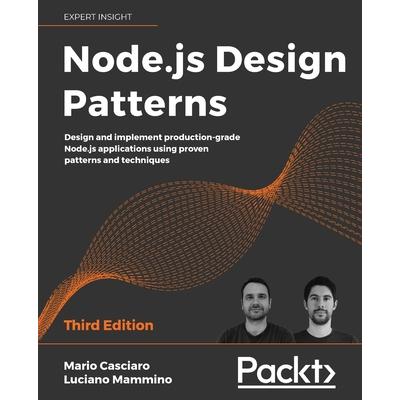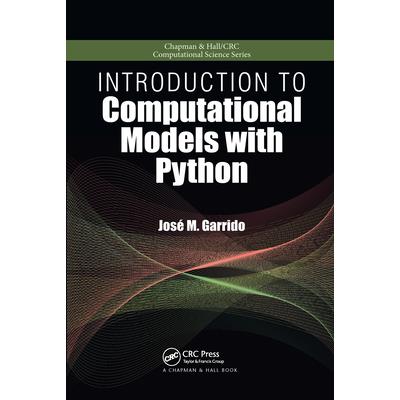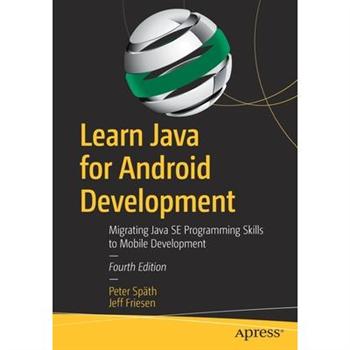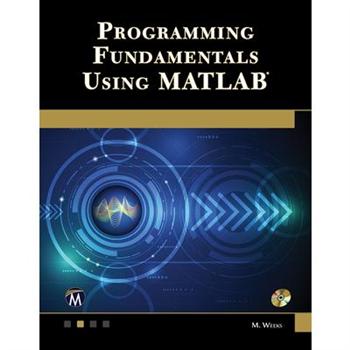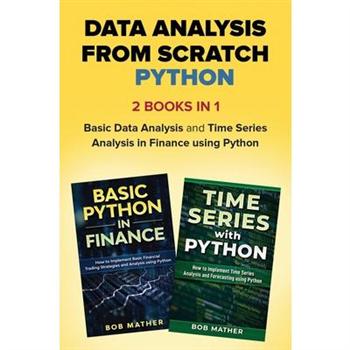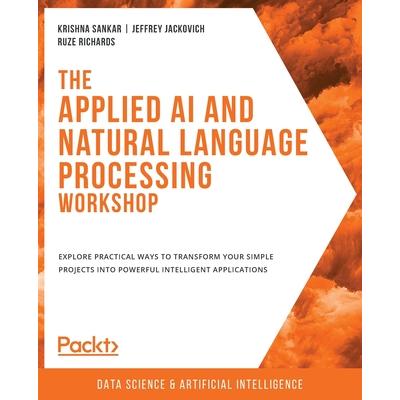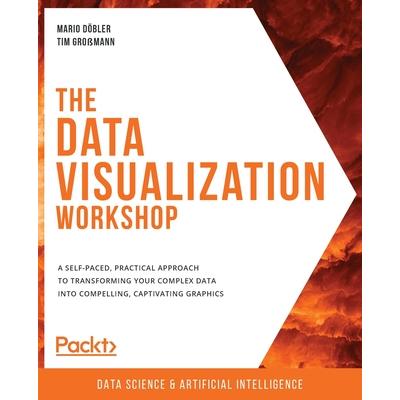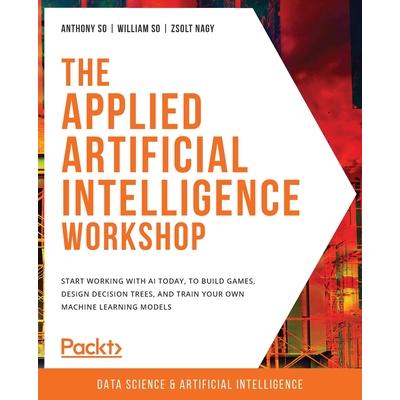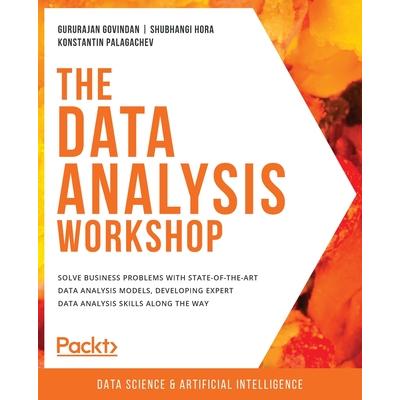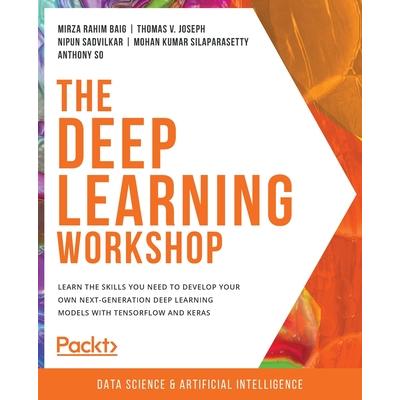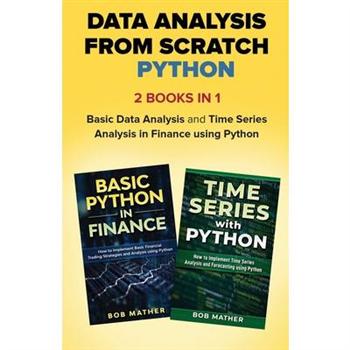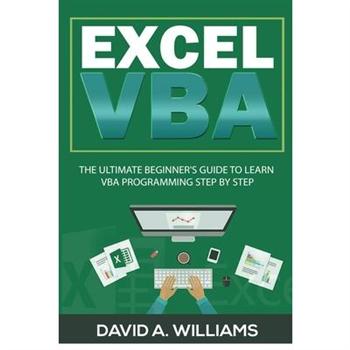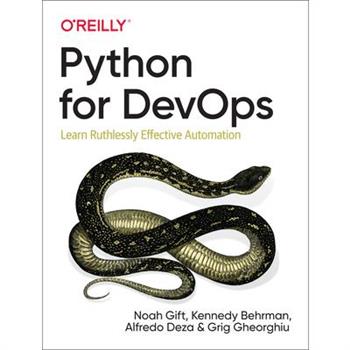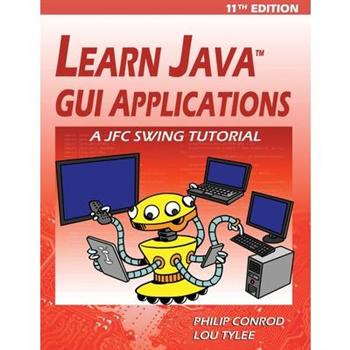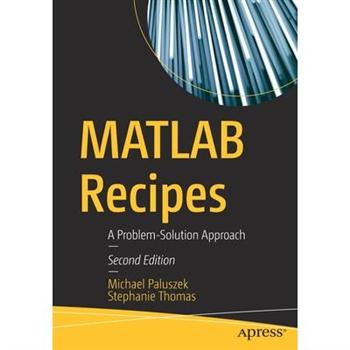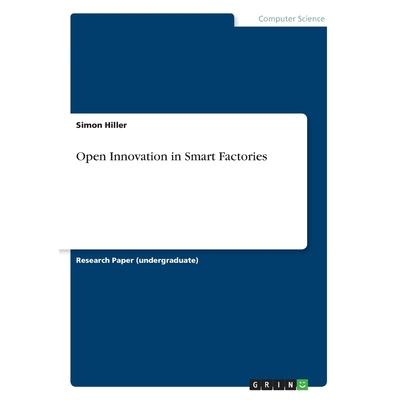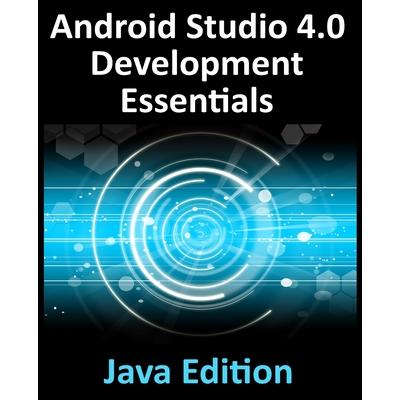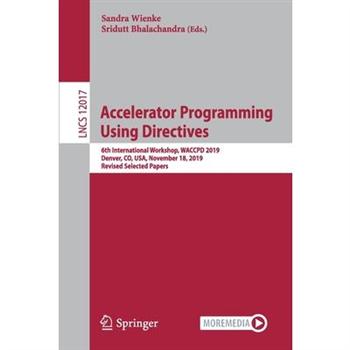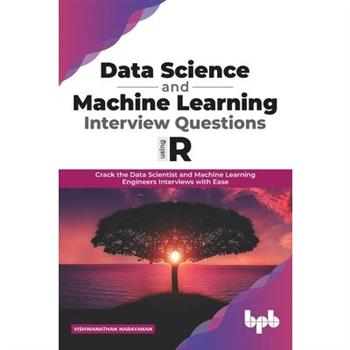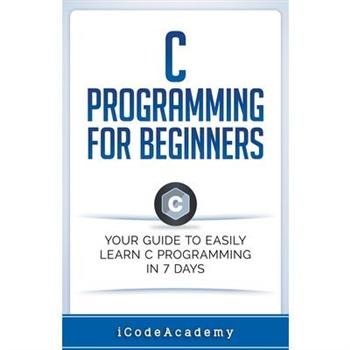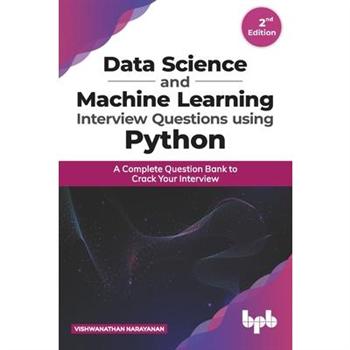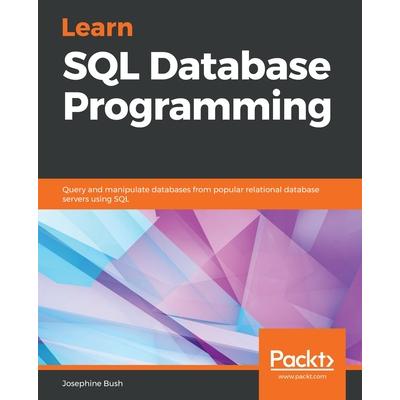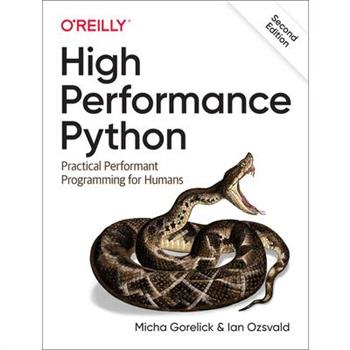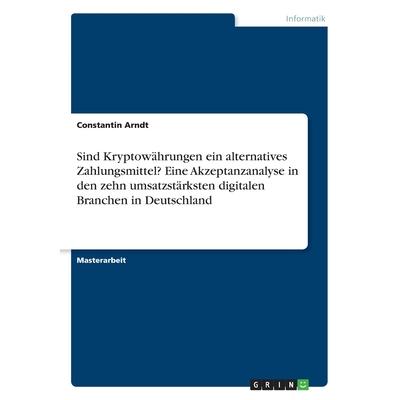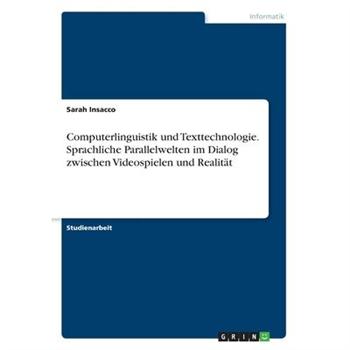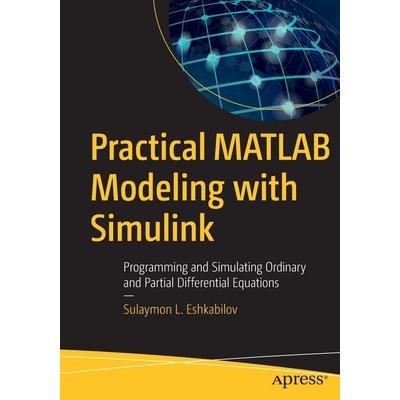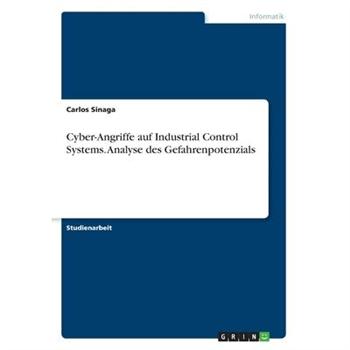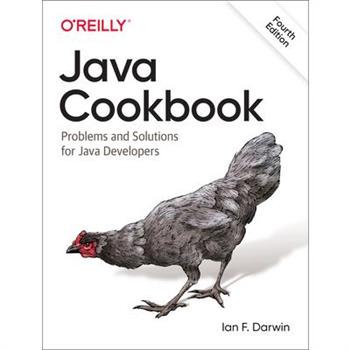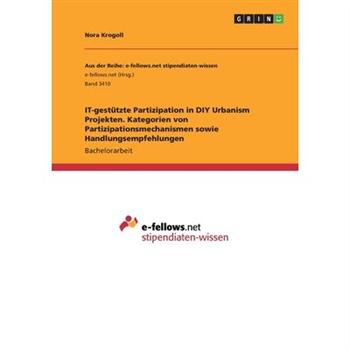Data Structure Practice
Combining knowledge with strategies, Data Structure Practice for Collegiate Programming Contests and Education presents the first comprehensive book on data structure in programming contests. This book is designed for training collegiate programming contest teams in the nuances of data structure and for helping college students in computer-related majors to gain deeper understanding of data structure.Based on successful experiences in many world-level contests, the book includes 204 typical problems and detailed analyses selected from the ACM International Collegiate Programming Contest and other major programming contests since 1990. It is divided into four sections that focus on: Fundamental programming skills Experiments for linear lists Experiments for trees Experiments for graphs Each chapter contains a set of problems and includes hints. The book also provides test data for most problems as well as sources and IDs for online judgments that help with improving programming skills.Introducing a multi-options model and considerations of context, Data Structure Practice for Collegiate Programming Contests and Education encourages students to think creatively in solving programming problems. By taking readers through practical contest problems from analysis to implementation, it provides a complete source for enhancing understanding and polishing skills in programming.
Node.js Design Patterns - Third editionDesign and implement production-grade Node.js appli
Learn proven patterns, techniques, and tricks to take full advantage of the Node.js platform. Master well-known design principles to create applications that are readable, extensible, and that can grow big.Purchase of the print or Kindle book includes a free eBook in the PDF format.Key FeaturesLearn how to create solid server-side applications by leveraging the full power of Node.jsUnderstand how Node.js works and learn how to take full advantage of its core components as well as the solutions offered by its ecosystemAvoid common mistakes and use proven patterns to create production grade Node.js applicationsBook DescriptionIn this book, we will show you how to implement a series of best practices and design patterns to help you create efficient and robust Node.js applications with ease.We kick off by exploring the basics of Node.js, analyzing its asynchronous event driven architecture and its fundamental design patterns. We then show you how to build asynchronous control flow patterns with callbacks, promises and async/await. Next, we dive into Node.js streams, unveiling their power and showing you how to use them at their full capacity. Following streams is an analysis of different creational, structural, and behavioral design patterns that take full advantage of JavaScript and Node.js. Lastly, the book dives into more advanced concepts such as Universal JavaScript, scalability and messaging patterns to help you build enterprise-grade distributed applications.Throughout the book, you'll see Node.js in action with the help of several real-life examples leveraging technologies such as LevelDB, Redis, RabbitMQ, ZeroMQ, and many others. They will be used to demonstrate a pattern or technique, but they will also give you a great introduction to the Node.js ecosystem and its set of solutions.What you will learnBecome comfortable with writing asynchronous code by leveraging callbacks, promises, and the async/await syntaxLeverage Node.js streams to create data-driven asynchronous processing pipelinesImplement well-known software design patterns to create production grade applicationsShare code between Node.js and the browser and take advantage of full-stack JavaScriptBuild and scale microservices and distributed systems powered by Node.jsUse Node.js in conjunction with other powerful technologies such as Redis, RabbitMQ, ZeroMQ, and LevelDBWho this book is forThis book is for developers and software architects who have some prior basic knowledge of JavaScript and Node.js and now want to get the most out of these technologies in terms of productivity, design quality, and scalability. Software professionals with intermediate experience in Node.js and JavaScript will also find valuable the more advanced patterns and techniques presented in this book.This book assumes that you have an intermediate understanding of web application development, databases, and software design principles.Table of ContentsThe Node.js PlatformThe Module SystemCallbacks and EventsAsynchronous Control Flow Patterns with CallbacksAsynchronous Control Flow Patterns with Promises and Async/AwaitCoding with StreamsCreational Design PatternsStructural Design PatternsBehavioral Design PatternsUniversal JavaScript for Web ApplicationsAdvanced RecipesScalability and Architectural PatternsMessaging and Integration Patterns
Introduction to Computational Models with Python
Introduction to Computational Models with Python explains how to implement computational models using the flexible and easy-to-use Python programming language. The book uses the Python programming language interpreter and several packages from the huge Python Library that improve the performance of numerical computing, such as the Numpy and Scipy modules. The Python source code and data files are available on the author's website.The book's five sections present: An overview of problem solving and simple Python programs, introducing the basic models and techniques for designing and implementing problem solutions, independent of software and hardware tools Programming principles with the Python programming language, covering basic programming concepts, data definitions, programming structures with flowcharts and pseudo-code, solving problems, and algorithms Python lists, arrays, basic data structures, object orientation, linked lists, recursion, and running programs under Linux Implementation of computational models with Python using Numpy, with examples and case studies The modeling of linear optimization problems, from problem formulation to implementation of computational models This book introduces the principles of computational modeling as well as the approaches of multi- and interdisciplinary computing to beginners in the field. It provides the foundation for more advanced studies in scientific computing, including parallel computing using MPI, grid computing, and other methods and techniques used in high-performance computing.
Introduction to Software Engineering
Practical Guidance on the Efficient Development of High-Quality SoftwareIntroduction to Software Engineering, Second Edition equips students with the fundamentals to prepare them for satisfying careers as software engineers regardless of future changes in the field, even if the changes are unpredictable or disruptive in nature. Retaining the same organization as its predecessor, this second edition adds considerable material on open source and agile development models.The text helps students understand software development techniques and processes at a reasonably sophisticated level. Students acquire practical experience through team software projects. Throughout much of the book, a relatively large project is used to teach about the requirements, design, and coding of software. In addition, a continuing case study of an agile software development project offers a complete picture of how a successful agile project can work.The book covers each major phase of the software development life cycle, from developing software requirements to software maintenance. It also discusses project management and explains how to read software engineering literature. Three appendices describe software patents, command-line arguments, and flowcharts.
Learn Java for Android Development
Gain the essential Java language skills necessary for using the Android SDK platform to build Java-based Android apps. This book includes the latest Java SE releases that Android supports, and is geared towards the Android SDK version 10. It includes new content including JSON documents, functional programming, and lambdas as well as other language features important for migrating Java skills to Android development. Android is still the world's most popular mobile platform and because this technology is still mostly based on Java, you should first obtain a solid grasp of the Java language and its APIs in order to improve your chances of succeeding as an effective Android apps developer. Learn Java for Android Development, 4th Edition helps you do that. Each of the book's chapters provides an exercise section that gives you the opportunity to reinforce your understanding of the chapter's material. Answers to the book's more than 500 exercises are provided in an appendix. Once you finish, you will be ready to begin your Android app development journey using Java. What You Will LearnDiscover the latest Java programming language features relevant to Android SDK development Apply inheritance, polymorphism, and interfaces to Android development Use Java collections, concurrency, I/O, networks, persistence, functional programming, and data access in Android apps Parse, create, and transform XML and JSON documents Migrate your Java skills for mobile development using the Android platform Who This Book Is For Programmers with at least some prior Java programming experience looking to get into mobile Java development with the Android platform.
Programming Fundamentals Using MATLAB
No matter what your background in programming, this book will introduce--or strengthen existing knowledge--of the MATLAB syntax and environment. Starting with basic MATLAB programming--terminology, MATLAB-specific control structures, operators, arrays and matrices--the book progresses into grouping data, making images, creating graphical interfaces and more. Case studies and practical applications and exercises are included which use MATLAB and other devices such as Arduino, Linux, Git, and Mex. Companion files provide code and color figures for the practice exercises.
The Deep Learning with Keras WorkshopTheDeep Learning with Keras WorkshopLearn how to defi
Discover how to leverage Keras, the powerful and easy-to-use open source Python library for developing and evaluating deep learning modelsKey Features Get to grips with various model evaluation metrics, including sensitivity, specificity, and AUC scores Explore advanced concepts such as sequential memory and sequential modeling Reinforce your skills with real-world development, screencasts, and knowledge checks Book Description New experiences can be intimidating, but not this one! This beginner's guide to deep learning is here to help you explore deep learning from scratch with Keras, and be on your way to training your first ever neural networks. What sets Keras apart from other deep learning frameworks is its simplicity. With over two hundred thousand users, Keras has a stronger adoption in industry and the research community than any other deep learning framework. The Deep Learning with Keras Workshop starts by introducing you to the fundamental concepts of machine learning using the scikit-learn package. After learning how to perform the linear transformations that are necessary for building neural networks, you'll build your first neural network with the Keras library. As you advance, you'll learn how to build multi-layer neural networks and recognize when your model is underfitting or overfitting to the training data. With the help of practical exercises, you'll learn to use cross-validation techniques to evaluate your models and then choose the optimal hyperparameters to fine-tune their performance. Finally, you'll explore recurrent neural networks and learn how to train them to predict values in sequential data. By the end of this book, you'll have developed the skills you need to confidently train your own neural network models. What you will learn Gain insights into the fundamentals of neural networks Understand the limitations of machine learning and how it differs from deep learning Build image classifiers with convolutional neural networks Evaluate, tweak, and improve your models with techniques such as cross-validation Create prediction models to detect data patterns and make predictions Improve model accuracy with L1, L2, and dropout regularization Who this book is for If you know the basics of data science and machine learning and want to get started with advanced machine learning technologies like artificial neural networks and deep learning, then this is the book for you. To grasp the concepts explained in this deep learning book more effectively, prior experience in Python programming and some familiarity with statistics and logistic regression are a must.
Data Analysis from Scratch with Python BundleBasic Data Analysis and Time Series Analysis in Finance using Python
Data Analysis from Scratch.2 Books in 1Book 1: Basic Python in FinanceBook 2: Time Series in Python.....................
The Applied AI and Natural Language Processing WorkshopTheApplied AI and Natural Language
With the help of engaging activities, learn how to leverage Amazon Web Services for building serverless intelligent applications that can process information in no timeKey Features Learn how to integrate Amazon's Simple Storage Services with AI and NLP projects Get to grips with serverless computing and its applications Create intelligent applications such as chatbots and image recognition models Book Description Are you fascinated with applications like Alexa and Siri and how they accurately process information within seconds before returning accurate results? Are you looking for a practical guide that will teach you how to build intelligent applications that can revolutionize the world of artificial intelligence? The Applied AI and NLP Workshop will take you on a practical journey where you will learn how to build artificial intelligence (AI) and natural language processing (NLP) applications with Amazon Web services (AWS). Starting with an introduction to AI and machine learning, this book will explain how Amazon S3, or Amazon Simple Storage Service, works. You'll then integrate AI with AWS to build serverless services and use Amazon's NLP service Comprehend to perform text analysis on a document. As you advance, the book will help you get to grips with topic modeling to extract and analyze common themes on a set of documents with unknown topics. You'll also work with Amazon Lex to create and customize a chatbot for task automation and use Amazon Rekognition for detecting objects, scenes, and text in images. By the end of The Applied AI and NLP Workshop, you'll be equipped with the knowledge and skills needed to build scalable intelligent applications with AWS. What you will learn Grasp the fundamentals of AI, ML, and AWS Explore the AWS command line, its interface, and its applications Import and export data to Amazon S3 Perform topic modeling on a set of documents to analyze common themes Develop a custom chatbot to get the latest stock market quotes Create a personal call center and connect it to the chatbot Who this book is for If you are a machine learning enthusiast, data scientist, or programmer who wants to explore AWS's artificial intelligence and machine learning capabilities, this book is for you. Although not necessary, a basic understanding of AI and NLP will assist with grasping key topics quickly.
The Deep Learning with PyTorch WorkshopTheDeep Learning with PyTorch WorkshopBuild deep ne
Get a head start in the world of AI and deep learning by developing your skills with PyTorchKey Features Learn how to define your own network architecture in deep learning Implement helpful methods to create and train a model using PyTorch syntax Discover how intelligent applications using features like image recognition and speech recognition really process your data Book Description Want to get to grips with one of the most popular machine learning libraries for deep learning? The Deep Learning with PyTorch Workshop will help you do just that, jumpstarting your knowledge of using PyTorch for deep learning even if you're starting from scratch. It's no surprise that deep learning's popularity has risen steeply in the past few years, thanks to intelligent applications such as self-driving vehicles, chatbots, and voice-activated assistants that are making our lives easier. This book will take you inside the world of deep learning, where you'll use PyTorch to understand the complexity of neural network architectures. The Deep Learning with PyTorch Workshop starts with an introduction to deep learning and its applications. You'll explore the syntax of PyTorch and learn how to define a network architecture and train a model. Next, you'll learn about three main neural network architectures - convolutional, artificial, and recurrent - and even solve real-world data problems using these networks. Later chapters will show you how to create a style transfer model to develop a new image from two images, before finally taking you through how RNNs store memory to solve key data issues. By the end of this book, you'll have mastered the essential concepts, tools, and libraries of PyTorch to develop your own deep neural networks and intelligent apps. What you will learn Explore the different applications of deep learning Understand the PyTorch approach to building neural networks Create and train your very own perceptron using PyTorch Solve regression problems using artificial neural networks (ANNs) Handle computer vision problems with convolutional neural networks (CNNs) Perform language translation tasks using recurrent neural networks (RNNs) Who this book is for This deep learning book is ideal for anyone who wants to create and train deep learning models using PyTorch. A solid understanding of the Python programming language and its packages will help you grasp the topics covered in the book more quickly.
The Machine Learning Workshop - Second EditionTheMachine Learning Workshop - Second Editio
Take a comprehensive and step-by-step approach to understanding machine learningKey Features Discover how to apply the scikit-learn uniform API in all types of machine learning models Understand the difference between supervised and unsupervised learning models Reinforce your understanding of machine learning concepts by working on real-world examples Book Description Machine learning algorithms are an integral part of almost all modern applications. To make the learning process faster and more accurate, you need a tool flexible and powerful enough to help you build machine learning algorithms quickly and easily. With The Machine Learning Workshop, you'll master the scikit-learn library and become proficient in developing clever machine learning algorithms. The Machine Learning Workshop begins by demonstrating how unsupervised and supervised learning algorithms work by analyzing a real-world dataset of wholesale customers. Once you've got to grips with the basics, you'll develop an artificial neural network using scikit-learn and then improve its performance by fine-tuning hyperparameters. Towards the end of the workshop, you'll study the dataset of a bank's marketing activities and build machine learning models that can list clients who are likely to subscribe to a term deposit. You'll also learn how to compare these models and select the optimal one. By the end of The Machine Learning Workshop, you'll not only have learned the difference between supervised and unsupervised models and their applications in the real world, but you'll also have developed the skills required to get started with programming your very own machine learning algorithms. What you will learn Understand how to select an algorithm that best fits your dataset and desired outcome Explore popular real-world algorithms such as K-means, Mean-Shift, and DBSCAN Discover different approaches to solve machine learning classification problems Develop neural network structures using the scikit-learn package Use the NN algorithm to create models for predicting future outcomes Perform error analysis to improve your model's performance Who this book is for The Machine Learning Workshop is perfect for machine learning beginners. You will need Python programming experience, though no prior knowledge of scikit-learn and machine learning is necessary.
The Data Wrangling Workshop, Second EditionTheData Wrangling Workshop, Second EditionCreat
A beginner's guide to simplifying Extract, Transform, Load (ETL) processes with the help of hands-on tips, tricks, and best practices, in a fun and interactive wayKey Features Explore data wrangling with the help of real-world examples and business use cases Study various ways to extract the most value from your data in minimal time Boost your knowledge with bonus topics, such as random data generation and data integrity checks Book Description While a huge amount of data is readily available to us, it is not useful in its raw form. For data to be meaningful, it must be curated and refined. If you're a beginner, then The Data Wrangling Workshop will help to break down the process for you. You'll start with the basics and build your knowledge, progressing from the core aspects behind data wrangling, to using the most popular tools and techniques. This book starts by showing you how to work with data structures using Python. Through examples and activities, you'll understand why you should stay away from traditional methods of data cleaning used in other languages and take advantage of the specialized pre-built routines in Python. Later, you'll learn how to use the same Python backend to extract and transform data from an array of sources, including the internet, large database vaults, and Excel financial tables. To help you prepare for more challenging scenarios, the book teaches you how to handle missing or incorrect data, and reformat it based on the requirements from your downstream analytics tool. By the end of this book, you will have developed a solid understanding of how to perform data wrangling with Python, and learned several techniques and best practices to extract, clean, transform, and format your data efficiently, from a diverse array of sources. What you will learn Get to grips with the fundamentals of data wrangling Understand how to model data with random data generation and data integrity checks Discover how to examine data with descriptive statistics and plotting techniques Explore how to search and retrieve information with regular expressions Delve into commonly-used Python data science libraries Become well-versed with how to handle and compensate for missing data Who this book is for The Data Wrangling Workshop is designed for developers, data analysts, and business analysts who are looking to pursue a career as a full-fledged data scientist or analytics expert. Although this book is for beginners who want to start data wrangling, prior working knowledge of the Python programming language is necessary to easily grasp the concepts covered here. It will also help to have a rudimentary knowledge of relational databases and SQL.
The Data Visualization WorkshopTheData Visualization WorkshopA self-paced, practical appro
Explore a modern approach to visualizing data with Python and transform large real-world datasets into expressive visual graphics using this beginner-friendly workshopKey Features Discover the essential tools and methods of data visualization Learn to use standard Python plotting libraries such as Matplotlib and Seaborn Gain insights into the visualization techniques of big companies Book Description Do you want to transform data into captivating images? Do you want to make it easy for your audience to process and understand the patterns, trends, and relationships hidden within your data? The Data Visualization Workshop will guide you through the world of data visualization and help you to unlock simple secrets for transforming data into meaningful visuals with the help of exciting exercises and activities. Starting with an introduction to data visualization, this book shows you how to first prepare raw data for visualization using NumPy and pandas operations. As you progress, you'll use plotting techniques, such as comparison and distribution, to identify relationships and similarities between datasets. You'll then work through practical exercises to simplify the process of creating visualizations using Python plotting libraries such as Matplotlib and Seaborn. If you've ever wondered how popular companies like Uber and Airbnb use geoplotlib for geographical visualizations, this book has got you covered, helping you analyze and understand the process effectively. Finally, you'll use the Bokeh library to create dynamic visualizations that can be integrated into any web page. By the end of this workshop, you'll have learned how to present engaging mission-critical insights by creating impactful visualizations with real-world data. What you will learn Understand the importance of data visualization in data science Implement NumPy and pandas operations on real-life datasets Create captivating data visualizations using plotting libraries Use advanced techniques to plot geospatial data on a map Integrate interactive visualizations to a webpage Visualize stock prices with Bokeh and analyze Airbnb data with Matplotlib Who this book is for The Data Visualization Workshop is for beginners who want to learn data visualization, as well as developers and data scientists who are looking to enrich their practical data science skills. Prior knowledge of data analytics, data science, and visualization is not mandatory. Knowledge of Python basics and high-school-level math will help you grasp the concepts covered in this data visualization book more quickly and effectively.
The Applied Artificial Intelligence WorkshopTheApplied Artificial Intelligence WorkshopSta
With knowledge and information shared by experts, take your first steps towards creating scalable AI algorithms and solutions in Python, through practical exercises and engaging activitiesKey Features Learn about AI and ML algorithms from the perspective of a seasoned data scientist Get practical experience in ML algorithms, such as regression, tree algorithms, clustering, and more Design neural networks that emulate the human brain Book Description You already know that artificial intelligence (AI) and machine learning (ML) are present in many of the tools you use in your daily routine. But do you want to be able to create your own AI and ML models and develop your skills in these domains to kickstart your AI career? The Applied Artificial Intelligence Workshop gets you started with applying AI with the help of practical exercises and useful examples, all put together cleverly to help you gain the skills to transform your career. The book begins by teaching you how to predict outcomes using regression. You'll then learn how to classify data using techniques such as k-nearest neighbor (KNN) and support vector machine (SVM) classifiers. As you progress, you'll explore various decision trees by learning how to build a reliable decision tree model that can help your company find cars that clients are likely to buy. The final chapters will introduce you to deep learning and neural networks. Through various activities, such as predicting stock prices and recognizing handwritten digits, you'll learn how to train and implement convolutional neural networks (CNNs) and recurrent neural networks (RNNs). By the end of this applied AI book, you'll have learned how to predict outcomes and train neural networks and be able to use various techniques to develop AI and ML models. What you will learn Create your first AI game in Python with the minmax algorithm Implement regression techniques to simplify real-world data Experiment with classification techniques to label real-world data Perform predictive analysis in Python using decision trees and random forests Use clustering algorithms to group data without manual support Learn how to use neural networks to process and classify labeled images Who this book is for The Applied Artificial Intelligence Workshop is designed for software developers and data scientists who want to enrich their projects with machine learning. Although you do not need any prior experience in AI, it is recommended that you have knowledge of high school-level mathematics and at least one programming language, preferably Python. Although this is a beginner's book, experienced students and programmers can improve their Python skills by implementing the practical applications given in this book.
Hands-On Unity 2020 Game DevelopmentBuild, customize, and optimize professional games usin
Build immersive game experiences using the new Unity 2020 features with this practical guideKey Features Unleash the capabilities of C# scripting for creating immersive UI, graphics, Game AI agents and much more Explore Unity's latest tools, including Universal Render Pipeline, Shader Graph, and VFX graph, to enhance graphics and animation Get started with building augmented reality experience using Unity's AR Foundation Book Description Over the years, the Unity game engine has extended its scope from just being about creating video games to building AR/VR experiences, complex simulations, real-time realistic rendering, films, and serious games for training and education. Its features for implementing gameplay, graphics, and customization using C# programming make Unity a comprehensive platform for developing professional-level, rich experiences. With this book, you'll be able to build impressive Unity projects in a step-by-step manner and apply your knowledge of Unity concepts to create a real-world game. Complete with hands-on tutorials and projects, this easy-to-follow guide will show you how to develop your first complete game using a variety of Unity tools. As you make progress, you'll learn how to make the most of the Unity Editor and create scripts using the C# programming language. This Unity game development book will then take you through integrating graphics, sound, and animations and manipulating physics to create impressive mechanics for your games. You'll also learn how to code a simple AI agent to challenge the user and use profiling tools to ensure that the code runs in a performant way. Finally, you'll get to grips with Unity's AR Foundation for creating AR experiences for 3D apps and games. By the end of this book, you'll have developed a complete game and will have built a solid foundation using Unity's tooling ecosystem to develop game projects of any scale. What you will learn Write scripts for customizing various aspects of a game, such as physics, gameplay, and UI Program rich shaders and effects using Unity's new Shader Graph and Universal Render Pipeline Implement postprocessing to increase graphics quality with full-screen effects Create rich particle systems for your Unity games from scratch using VFX Graph and Shuriken Add animations to your game using the Animator, Cinemachine, and Timeline Implement game artificial intelligence (AI) to control character behavior Detect and fix optimization issues using profilers and batching Who this book is for This book is for game developers looking to migrate to the Unity game engine. If you are a developer with some exposure to Unity, this book will help you explore its latest features. Prior experience with C# programming is required to get the most out of the book.
The Data Analysis WorkshopTheData Analysis WorkshopSolve business problems with state-of-the-art data analysis models, developing expert data analysis skills along the way
Learn how to analyze data using Python models with the help of real-world use cases and guidance from industry expertsKey Features Get to grips with data analysis by studying use cases from different fields Develop your critical thinking skills by following tried-and-true data analysis Learn how to use conclusions from data analyses to make better business decisions Book Description Businesses today operate online and generate data almost continuously. While not all data in its raw form may seem useful, if processed and analyzed correctly, it can provide you with valuable hidden insights. The Data Analysis Workshop will help you learn how to discover these hidden patterns in your data, to analyze them, and leverage the results to help transform your business. The book begins by taking you through the use case of a bike rental shop. You'll be shown how to correlate data, plot histograms, and analyze temporal features. As you progress, you'll learn how to plot data for a hydraulic system using the Seaborn and Matplotlib libraries, and explore a variety of use cases that show you how to join and merge databases, prepare data for analysis, and handle imbalanced data. By the end of the book, you'll have learned different data analysis techniques, including hypothesis testing, correlation, and null-value imputation, and will have become a confident data analyst. What you will learn Get to grips with the fundamental concepts and conventions of data analysis Understand how different algorithms help you to analyze the data effectively Determine the variation between groups of data using hypothesis testing Visualize your data correctly using appropriate plotting points Use correlation techniques to uncover the relationship between variables Find hidden patterns in data using advanced techniques and strategies Who this book is for The Data Analysis Workshop is for programmers who already know how to code in Python and want to use it to perform data analysis. If you are looking to gain practical experience in data science with Python, this book is for you.
The Deep Learning Workshop
Take a hands-on approach to understanding deep learning and build smart applications that can recognize images and interpret textKey Features Understand how to implement deep learning with TensorFlow and Keras Learn the fundamentals of computer vision and image recognition Study the architecture of different neural networks Book Description Are you fascinated by how deep learning powers intelligent applications such as self-driving cars, virtual assistants, facial recognition devices, and chatbots to process data and solve complex problems? Whether you are familiar with machine learning or are new to this domain, The Deep Learning Workshop will make it easy for you to understand deep learning with the help of interesting examples and exercises throughout. The book starts by highlighting the relationship between deep learning, machine learning, and artificial intelligence and helps you get comfortable with the TensorFlow 2.0 programming structure using hands-on exercises. You'll understand neural networks, the structure of a perceptron, and how to use TensorFlow to create and train models. The book will then let you explore the fundamentals of computer vision by performing image recognition exercises with convolutional neural networks (CNNs) using Keras. As you advance, you'll be able to make your model more powerful by implementing text embedding and sequencing the data using popular deep learning solutions. Finally, you'll get to grips with bidirectional recurrent neural networks (RNNs) and build generative adversarial networks (GANs) for image synthesis. By the end of this deep learning book, you'll have learned the skills essential for building deep learning models with TensorFlow and Keras. What you will learn Understand how deep learning, machine learning, and artificial intelligence are different Develop multilayer deep neural networks with TensorFlow Implement deep neural networks for multiclass classification using Keras Train CNN models for image recognition Handle sequence data and use it in conjunction with RNNs Build a GAN to generate high-quality synthesized images Who this book is for If you are interested in machine learning and want to create and train deep learning models using TensorFlow and Keras, this workshop is for you. A solid understanding of Python and its packages, along with basic machine learning concepts, will help you to learn the topics quickly.
Mastering Django
Mastering Django is the latest version of Mastering Django: Core-the original, best-selling programmer's reference for Django.Mastering Django is not just a revision of the original book-it has been completely rewritten from the ground up to meet the needs of modern Django programmers.The main goal of this book is to make you a Django expert. By reading this book, you'll learn the skills needed to develop powerful websites quickly, with code that is clean and easy to maintain.This book is also a programmer's manual that provides complete coverage of both Django 2 and Django 3. For developers creating applications for commercial and business-critical deployments, Mastering Django delivers a comprehensive, up-to-date resource for the latest versions of Django.
Data Analysis from Scratch with Python BundleBasic Data Analysis and Time Series Analysis in Finance using Python
Data Analysis from Scratch.2 Books in 1Book 1: Basic Python in FinanceBook 2: Time Series in Python.....................
Excel VBAThe Ultimate Beginner’s Guide to Learn VBA Programming Step by Step
Have you wanted to automate different processes and functions that you perform on Excel?If you want to take Excel to a new level, you should understand VBA and automate the many processes that you can perform in Excel. If you want to do this, you have come to the right place.This book introduces numerous Excel options starting right from the different tools and operations that you can perform using Visual Basic. Over the course of this book, you will gather information about all the necessary concepts and elements that will help you program with Excel.You will discover different techniques to help you remove bugs and handle errors. You will also learn how you can control the flow of a program, and much more.There are many changes that you will see in the Excel application that was released in 2016, and this book will make it easier for you to harness the power of both Excel and Visual Basic for applications.You will learn to create numerous macros and applications. This book is packed with some advice on the different techniques that you can use to develop custom toolbars, menus, and dialog boxes.You can, therefore, create any application in Excel that will fit your needs.This book will: Provide you with step-by-step instructions that will help you create macros in Excel to maximize your productivityHelp to increase the efficiency by helping you customize applications in Excel, so they function the way you want them toProvide sample code and programs that will help you improve on your conceptsIf you want to learn more about how you can create customized solutions using Excel, grab a copy of this book now.
Python for Devops
Much has changed in technology over the past decade. Data is hot, the cloud is ubiquitous, and many organizations need some form of automation. Throughout these transformations, Python has become one of the most popular languages in the world. This practical resource shows you how to use Python for everyday Linux systems administration tasks with today's most useful DevOps tools, including Docker, Kubernetes, and Terraform. Learning how to interact and automate with Linux is essential for millions of professionals. Python makes it much easier. With this book, you'll learn how to develop software and solve problems using containers, as well as how to monitor, instrument, load-test, and operationalize your software. Looking for effective ways to "get stuff done" in Python? This is your guide. Python foundations, including a brief introduction to the language How to automate text, write command-line tools, and automate the filesystem Linux utilities, package management, build systems, monitoring and instrumentation, and automated testing Cloud computing, infrastructure as code, Kubernetes, and serverless Machine learning operations and data engineering from a DevOps perspective Building, deploying, and operationalizing a machine learning project
Learn Java GUI Applications - 11th Edition
LEARN JAVA GUI APPLICATIONS is a self-study and/or instructor led tutorial teaching the basics of building a Java application with a swing graphic user interface (GUI).LEARN JAVA GUI APPLICATIONS has 9 lessons covering object-oriented programming concepts, using the NetBeans integrated development environment to create and test Java projects, building and distributing GUI applications, understanding and using the Swing control library, exception handling, sequential file access, graphics, multimedia, advanced topics such as printing, and help system authoring.The focus of LEARN JAVA GUI APPLICATIONS is to use the existing objects and capabilities of the Java Swing library to build a wide variety of useful desktop applications. Some of the applications built include: Stopwatch, Calendar Display, Loan Repayment Calculator, Flash Card Math Game, Database Input Screen, Statistics Calculator, Tic-Tac-Toe Game, Capital City Quiz, Information Tracker (with plotting), Blackjack, Line, Bar and Pie charts, a version of the first video game ever - Pong, and a Telephone Directory.LEARN JAVA GUI APPLICATIONS is presented using a combination of over 1,100 pages of color course notes and over 100 practical Java GUI examples and applications. To grasp the concepts presented in LEARN JAVA GUI APPLICATIONS, you should have had some exposure to Java programming concepts. We offer two beginning Java programming tutorials, BEGINNING JAVA and JAVA FOR KIDS that would help you gain this needed exposure.This course requires Microsoft Windows, MAC OS X or Linux. To complete this tutorial, you will need to download the Java Development Kit (JDK11) Standard Edition (SE) from Oracle's website. This tutorial also uses NetBeans 11 as the IDE (Integrated Development Environment) for building and testing Java applications which is available from Apache's website.
MATLAB Recipes
Learn from state-of-the-art examples in robotics, motors, detection filters, chemical processes, aircraft, and spacecraft. With this book you will review contemporary MATLAB coding including the latest MATLAB language features and use MATLAB as a software development environment including code organization, GUI development, and algorithm design and testing. Features now covered include the new graph and digraph classes for charts and networks; interactive documents that combine text, code, and output; a new development environment for building apps; locally defined functions in scripts; automatic expansion of dimensions; tall arrays for big data; the new string type; new functions to encode/decode JSON; handling non-English languages; the new class architecture; the Mocking framework; an engine API for Java; the cloud-based MATLAB desktop; the memoize function; and heatmap charts. MATLAB Recipes: A Problem-Solution Approach, Second Edition provides practical, hands-on code snippets and guidance for using MATLAB to build a body of code you can turn to time and again for solving technical problems in your work. Develop algorithms, test them, visualize the results, and pass the code along to others to create a functional code base for your firm. What You Will Learn Get up to date with the latest MATLAB up to and including MATLAB 2020bCode in MATLAB Write applications in MATLAB Build your own toolbox of MATLAB code to increase your efficiency and effectiveness Who This Book Is For Engineers, data scientists, and students wanting a book rich in examples using MATLAB.
Open Innovation in Smart Factories
Research Paper (undergraduate) from the year 2020 in the subject Computer Sciences - Internet of Things, IOT, grade: 1,0, Baden-Wuerttemberg Cooperative State University (DHBW), language: English, abstract: In this research project, it will be investigated if and how the methods of Open Innovation can be successfully applied for the development of Smart Factory technologies. Therefore, methods, pros and cons, challenges, and application fields of the Open Innovation approach will be discussed. Then the author reviews the relevant technological backgrounds of Smart Factories, thereby including sections about their structure, important technologies, pros and cons as well as specific challenges in developing Smart Factory technologies. After that both topics will be looked at together to investigate whether the Open Innovation practices can help to overcome the challenges of technologies in Smart Factory environments. Given the high complexity of Smart Factories, it is not achievable to do this for all included technologies. Therefore, the investigation is limited to one technology. In the examination, the best suited Open Innovation approach will be determined before a strategy for developing this technology will be designed. In the concluding chapter, the most important findings of the research project will be summarized before a conclusion is drawn and an outlook on possible future research and approaches is given.
Learn C Programming
Get started with writing simple programs in C while learning the skills that will help you work with practically any programming languageKey Features Learn essential C concepts such as variables, data structures, functions, loops, and pointers Get to grips with the core programming aspects that form the base of many modern programming languages Explore the expressiveness and versatility of the C language with the help of sample programs Book Description C is a powerful general-purpose programming language that is excellent for beginners to learn. This book will introduce you to computer programming and software development using C. If you're an experienced developer, this book will help you to become familiar with the C programming language. This C programming book takes you through basic programming concepts and shows you how to implement them in C. Throughout the book, you'll create and run programs that make use of one or more C concepts, such as program structure with functions, data types, and conditional statements. You'll also see how to use looping and iteration, arrays, pointers, and strings. As you make progress, you'll cover code documentation, testing and validation methods, basic input/output, and how to write complete programs in C. By the end of the book, you'll have developed basic programming skills in C, that you can apply to other programming languages and will develop a solid foundation for you to advance as a programmer. What you will learn Understand fundamental programming concepts and implement them in C Write working programs with an emphasis on code indentation and readability Break existing programs intentionally and learn how to debug code Adopt good coding practices and develop a clean coding style Explore general programming concepts that are applicable to more advanced projects Discover how you can use building blocks to make more complex and interesting programs Use C Standard Library functions and understand why doing this is desirable Who this book is for This book is written for two very diverse audiences. If you're an absolute beginner who only has basic familiarity with operating a computer, this book will help you learn the most fundamental concepts and practices you need to know to become a successful C programmer. If you're an experienced programmer, you'll find the full range of C syntax as well as common C idioms. You can skim through the explanations and focus primarily on the source code provided.
Android Studio 4.0 Development Essentials - Java Edition
Fully updated for Android Studio 4.0, Android 10 (Q), Android Jetpack and the modern architectural guidelines and components, the goal of this book is to teach the skills necessary to develop Android-based applications using the Java programming language.An overview of Android Studio is included covering areas such as tool windows, the code editor and the Layout Editor tool. An introduction to the architecture of Android is followed by an in-depth look at the design of Android applications and user interfaces using the Android Studio environment.Chapters are also included covering the Android Architecture Components including view models, lifecycle management, Room databases, app navigation, live data and data binding.More advanced topics such as intents are also covered, as are touch screen handling, gesture recognition and the playback and recording of audio. This edition of the book also covers printing, transitions, cloud-based file storage and foldable device support.The concepts of material design are also covered in detail, including the use of floating action buttons, Snackbars, tabbed interfaces, card views, navigation drawers and collapsing toolbars.In addition to covering general Android development techniques, the book also includes Google Play specific topics such as implementing maps using the Google Maps Android API, and submitting apps to the Google Play Developer Console.Other key features of Android Studio 4.0 and Android 10 are also covered in detail including the Layout Editor, the ConstraintLayout and ConstraintSet classes, constraint chains, MotionLayout animation, barriers, direct reply notifications, view bindings and multi-window support.Chapters also cover advanced features of Android Studio such as App Links, Dynamic Feature Modules, the Android Studio Profiler and Gradle build configuration.Assuming you already have some programming experience, are ready to download Android Studio and the Android SDK, have access to a Windows, Mac or Linux system and ideas for some apps to develop, you are ready to get started.
Xamarin.Forms Projects
Learn to build cross-platform mobile apps using the latest features in Xamarin.Forms 4 with the help of a series of projects including apps for real-time chatting, AR games, location-tracking, weather, photo galleries, and much moreKey Features Develop mobile apps, AR games, and chatbots of varying complexity with the help of real-world examples Explore the important features of Xamarin.Forms 4 such as Shell, CollectionView, and CarouselView Get to grips with advanced concepts such as AR and VR and machine learning for mobile development Book Description Xamarin.Forms is a lightweight cross-platform development toolkit for building apps with a rich user interface. Improved and updated to cover the latest features of Xamarin.Forms, this second edition covers CollectionView and Shell, along with interesting concepts such as augmented reality (AR) and machine learning. Starting with an introduction to Xamarin and how it works, this book shares tips for choosing the type of development environment you should strive for when planning cross-platform mobile apps. You'll build your first Xamarin.Forms app and learn how to use Shell to implement the app architecture. The book gradually increases the level of complexity of the projects, guiding you through creating apps ranging from a location tracker and weather map to an AR game and face recognition. As you advance, the book will take you through modern mobile development frameworks such as SQLite, .NET Core Mono, ARKit, and ARCore. You'll be able to customize your apps for both Android and iOS platforms to achieve native-like performance and speed. The book is filled with engaging examples, so you can grasp essential concepts by writing code instead of reading through endless theory. By the end of this book, you'll be ready to develop your own native apps with Xamarin.Forms and its associated technologies, such as .NET Core, Visual Studio 2019, and C#. What you will learn Set up Xamarin.Forms to build native apps with code-sharing capabilities Understand the core aspects of developing a mobile app, such as its layout, UX, and rendering Use custom renderers to gain platform-specific access Discover how to create custom layouts for your apps with Xamarin.Forms Shell Use Azure SignalR to implement serverless services in your Xamarin apps Create an augmented reality (AR) game for Android and iOS using ARCore and ARKit, respectively Build and train machine learning models using CoreML, TensorFlow, and Azure Cognitive Services Who this book is for This book is for C# and .NET developers who want to learn Xamarin.Forms and get started with native Xamarin mobile application development from the ground up. Working knowledge of Visual Studio will help you to get the most out of this book.
Accelerator Programming Using Directives
This book constitutes the refereed post-conference proceedings of the 6th International Workshop on Accelerator Programming Using Directives, WACCPD 2019, held in Denver, CO, USA, in November 2019.The 7 full papers presented have been carefully reviewed and selected from 13 submissions. The papers share knowledge and experiences to program emerging complex parallel computing systems. They are organized in the following three sections: porting scientific applications to heterogeneous architectures using directives; directive-based programming for math libraries; and performance portability for heterogeneous architectures.
Android Studio 4.0 Development Essentials - Kotlin Edition
Fully updated for Android Studio 4.0, Android 10 (Q), Android Jetpack and the modern architectural guidelines and components, the goal of this book is to teach the skills necessary to develop Android-based applications using the Kotlin programming language.Beginning with the basics, this book provides an outline of the steps necessary to set up an Android development and testing environment followed by an introduction to programming in Kotlin including data types, flow control, functions, lambdas, coroutines and object-oriented programming.An overview of Android Studio is included covering areas such as tool windows, the code editor and the Layout Editor tool. An introduction to the architecture of Android is followed by an in-depth look at the design of Android applications and user interfaces using the Android Studio environment.Chapters are also included covering the Android Architecture Components including view models, lifecycle management, Room databases, app navigation, live data and data binding.More advanced topics such as intents are also covered, as are touch screen handling, gesture recognition and the playback and recording of audio. This edition of the book also covers printing, transitions, cloud-based file storage and foldable device support.The concepts of material design are also covered in detail, including the use of floating action buttons, Snackbars, tabbed interfaces, card views, navigation drawers and collapsing toolbars.In addition to covering general Android development techniques, the book also includes Google Play specific topics such as implementing maps using the Google Maps Android API, and submitting apps to the Google Play Developer Console.Other key features of Android Studio 4.0 and the Android SDK are also covered in detail including the Layout Editor, the ConstraintLayout and ConstraintSet classes, MotionLayout animation, constraint chains and barriers, view binding, direct reply notifications and multi-window support.Chapters also cover advanced features of Android Studio such as App Links, Dynamic Feature Modules, the Android Studio Profiler and Gradle build configuration.Assuming you already have some programming experience, are ready to download Android Studio and the Android SDK, have access to a Windows, Mac or Linux system and ideas for some apps to develop, you are ready to get started.
Data Science and Machine Learning Interview Questions Using RCrack the Data Scientist and Machine Learning Engineers Interviews with Ease (English Edition)
Get answers to frequently asked questions on Data Science and Machine Learning using R Key FeaturesUnderstand the capabilities of the R programming language Most of the machine learning algorithms and their R implementation covered in depthAnswers on conceptual data science concepts are also covered Description This book prepares you for the Data Scientist and Machine Learning Engineer interview w.r.t. R programming language. The book is divided into various parts, making it easy for you to remember and associate with the questions asked in an interview. It covers multiple possible transformations and data filtering techniques in depth. You will be able to create visualizations like graphs and charts using your data. You will also see some examples of how to build complex charts with this data. This book covers the frequently asked interview questions and shares insights on the kind of answers that will help you get this job.By the end of this book, you will not only crack the interview but will also have a solid command of the concepts of Data Science as well as R programming. What will you learn Get answers to the basics, intermediate and advanced questions on R programming Understand the transformation and filtering capabilities of RKnow how to perform visualization using R Who this book is forThis book is a must for anyone interested in Data Science and Machine Learning. Anyone who wants to clear the interview can use it as a last-minute revision guide. Table of Contents 1. Data Science basic questions and terms 2. R programming questions 3. GGPLOT Questions 4. Statistics with excel sheet About the Author Vishwanathan Narayanan has 18 years of experience in the field of information technology and data analysis. He made many enterprise-level applications with stable output and scalability.Advanced level data analysis for complex problems using both R and Python has been the key area of work for many years. Extreme programmer on Java, Python, R, and many more technologies
C Programming for Beginners
Are You Ready To Learn C Programming Easily? This book is also designed for software programmers who want to learn the C programming language from scratch. It provides you with an adequate understanding of the programming language. From there, you can bring yourself towards a higher level of expertise. While you are not really required to have any previous experience with computer programming, you still need to have a basic understanding of the terms commonly used in programming and computers.You see, the C language is one of the most recommended computer programming languages for beginners. After all, it is a predecessor to many of the modern programming languages used today, such as Java and Python. In other words, before you can effectively learn these languages, you have to have a clear understanding of the C language first.Through this book, you will learn how to write your first programs and see how they work in real time. You have to keep in mind that it is perfectly okay to make mistakes every now and then. It is through these mistakes that you learn. So, when you encounter an error on your program, you just have to study the part where you went wrong and redo it. When you run the programs in the C language, you will be notified in case you made a mistake. You will see the error and know which line you have to modify.This book features Frequently Asked Questions (FAQ) sections that are written with beginners like you in mind. The author understands that beginners may have certain questions with regard to the elements of C that are not often discussed in books.This book also teaches you how you can write the shortest programs possible, without negatively affecting your output. As a programmer, you want to make the most of your available time and space while still being efficient. You will also learn how to organise your codes and include remarks via comments so that you and your readers will not get confused.
Code-It Workbook 4: Problem Solving Using Scratch
Code IT Primary Programming SeriesBasic computer coding is now among the most important skills a child can have for their future. There are many programming languages designed specifically for children to begin their studies, but the Scratch programming language, already recognised in schools around the world, is widely considered as the ideal place to begin programming in early education. The highly successful Code-It series is a comprehensive guide to teaching Scratch to children in a classroom setting. It is designed for the UK-based KS2 curriculum but can easily be used to supplement other programming courses for children between the ages of 7 and 11. There are four pupil workbooks designed to work in conjunction with the Code-It teacher handbook. They provide structure and resources for the children, including optional homework activities to extend to learning outside the classroom. Workbook 4 explains how to think, program and debug exciting programming projects such as Times Tables Game, Perimeter, Clock, Cartesian Coordinates, Translation, Enlargement & Rotation, Primary Games Maker, Tilt Switch and Chat Bot. It also outlines how to use analytical computational thinking skills of algorithm design, algorithm evaluation, decomposition and generalisation; extend resilience and problem solving through the computational doing skills of converting algorithm into code and debugging; develop pupils' knowledge of sequence, repetition, selection and variable use; and program Lego models using Lego Wedo and Scratch.
Data Science and Machine Learning Interview Questions Using PythonA Complete Question Bank
Know Data science with numpy, pandas, scipy, sklearn Key FeaturesQuestions related to core/basic Python, Excel, basic and advanced statistics are included Book will prove to be a companion whenever you want to go for an interview Simple to use words have been used in the answers for the questions to help ease of rememberingDescription "Data science and Machine learning interview questions using Python," a book which is a true companion of people aspiring for data science and machine learning, and it provides answers to most asked questions in an easy to remember and presentable form.Book mainly intended to be used as last-minute revision, before the interview, as all the important concepts and various terminologies have been given in a very simple and understandable format. Many examples have been provided so that the same can be used while giving answers in an interview.The book is divided into six chapters, which starts with the Data Science Basic Questions and Terms then covers the questions related to Python Programming, Numpy, Pandas, Scipy, and its Applications, then at the last covers Matplotlib and Statistics with Excel Sheet. What will you learn You can learn the basic concept and terms related to Data Science, python programming You will get to learn how to program in python, basics of Numpy You will get familiarity with the questions asked in an interview related to Pandas and learn the concepts of Scipy, Matplotib, and Statistics with Excel Sheet Who this book is for The book is mainly intended to help people represent their answer in a sensible way to the interviewer. The answers have been carefully rendered in a way to make things quite simple and yet represent the seriousness and complexity of the matter. Since data science is incomplete without mathematics, we have also included a part of the book dedicated to statistics. Table of Contents 1. Data Science Basic Questions and Terms2. Python Programming Questions3. Numpy Interview Questions4. Pandas Interview Questions5. Scipy and its Applications6. Matplotlib Samples to Remember7. Statistics with Excel Sheet About the Author Vishwanathan has twenty years of hard code experience in the software industry spanning across many multinational companies and domains. Playing with data to derive meaningful insights has been his domain, and that is what took him towards data science and machine learning.
Learn SQL Database ProgrammingQuery and manipulate databases from popular relational datab
Learn everything you need to know to build efficient SQL queries using this easy-to-follow beginner's guideKey Features Explore all SQL statements in depth using a variety of examples Get to grips with database querying, data aggregate, manipulation, and much more Understand how to explore and process data of varying complexity to tell a story Book Description SQL is a powerful querying language that's used to store, manipulate, and retrieve data, and it is one of the most popular languages used by developers to query and analyze data efficiently. If you're looking for a comprehensive introduction to SQL, Learn SQL Database Programming will help you to get up to speed with using SQL to streamline your work in no time. Starting with an overview of relational database management systems, this book will show you how to set up and use MySQL Workbench and design a database using practical examples. You'll also discover how to query and manipulate data with SQL programming using MySQL Workbench. As you advance, you'll create a database, query single and multiple tables, and modify data using SQL querying. This SQL book covers advanced SQL techniques, including aggregate functions, flow control statements, error handling, and subqueries, and helps you process your data to present your findings. Finally, you'll implement best practices for writing SQL and designing indexes and tables. By the end of this SQL programming book, you'll have gained the confidence to use SQL queries to retrieve and manipulate data. What you will learn Install, configure, and use MySQL Workbench to restore a database Explore different data types such as string, numeric, and date and time Query a single table using the basic SQL SELECT statement and the FROM, WHERE, and ORDER BY clauses Query multiple tables by understanding various types of table relationships Modify data in tables using the INSERT, UPDATE, and DELETE statements Use aggregate functions to group and summarize data Detect bad data, duplicates, and irrelevant values while processing data Who this book is for This book is for business analysts, SQL developers, database administrators, and students learning SQL. If you want to learn how to query and manipulate SQL data for database administration tasks or simply extract and organize relevant data for analysis, you'll find this book useful. No prior SQL experience is required.
High Performance Python
Your Python code may run correctly, but you need it to run faster. Updated for Python 3, this expanded edition shows you how to locate performance bottlenecks and significantly speed up your code in high-data-volume programs. By exploring the fundamental theory behind design choices, High Performance Python helps you gain a deeper understanding of Python's implementation. How do you take advantage of multicore architectures or clusters? Or build a system that scales up and down without losing reliability? Experienced Python programmers will learn concrete solutions to many issues, along with war stories from companies that use high-performance Python for social media analytics, productionized machine learning, and more. Get a better grasp of NumPy, Cython, and profilers Learn how Python abstracts the underlying computer architecture Use profiling to find bottlenecks in CPU time and memory usage Write efficient programs by choosing appropriate data structures Speed up matrix and vector computations Use tools to compile Python down to machine code Manage multiple I/O and computational operations concurrently Convert multiprocessing code to run on local or remote clusters Deploy code faster using tools like Docker
Spring Boot Persistence Best Practices
This book is a collection of developer code recipes and best practices for persisting data using Spring, particularly Spring Boot. The book is structured around practical recipes, where each recipe discusses a performance case or performance-related case, and almost every recipe has one or more applications. Mainly, when we try to accomplish something (e.g., read some data from the database), there are several approaches to do it, and, in order to choose the best way, you have to know the implied trades-off from a performance perspective. You'll see that in the end, all these penalties slow down the application. Besides presenting the arguments that favor a certain choice, the application is written in Spring Boot style which is quite different than plain Hibernate. Persistence is an important set of techniques and technologies for accessing and using data, and this book demonstrates that data is mobile regardless of specific applications and contexts. In Java development, persistence is a key factor in enterprise, ecommerce, cloud and other transaction-oriented applications. After reading and using this book, you'll have the fundamentals to apply these persistence solutions into your own mission-critical enterprise Java applications that you build using Spring. What You Will Learn Shape *-to-many associations for best performancesEffectively exploit Spring Projections (DTO) Learn best practices for batching inserts, updates and deletes Effectively fetch parent and association in a single SELECTLearn how to inspect Persistent Context contentDissect pagination techniques (offset and keyset)Handle queries, locking, schemas, Hibernate types, and more Who This Book Is For Any Spring and Spring Boot developer that wants to squeeze the persistencelayer performances.
C++20 Recipes
Discover the newest major features of C++20, including modules, concepts, spaceship operators, and smart pointers. This book is a handy code cookbook reference guide that covers the C++ core language standard as well as some of the code templates available in standard template library (STL). In C++20 Recipes: A Problem-Solution Approach, you'll find numbers, strings, dates, times, classes, exceptions, streams, flows, pointers, and more. Also, you'll see various code samples, templates for C++ algorithms, parallel processing, multithreading, and numerical processes. It also includes 3D graphics programming code. A wealth of STL templates on function objects, adapters, allocators, and extensions are also available. This is a must-have, contemporary reference for your technical library to help with just about any project that involves the C++ programming language. What You Will Learn See what's new in C++20 Write modules Work with text, numbers, and classes Use the containers and algorithms available in the standard library Work with templates, memory, concurrency, networking, scripting, and more Code for 3D graphics Who This Book Is For Programmers with at least some prior experience with C++.
Sind Kryptow瓣hrungen ein alternatives Zahlungsmittel? Eine Akzeptanzanalyse in den zehn um
Masterarbeit aus dem Jahr 2018 im Fachbereich Informatik - Kryptow瓣hrungen, Note: 1.4, BSP Business School Berlin (ehem. Potsdam), Sprache: Deutsch, Abstract: Diese Masterarbeit untersucht die Determinanten, die zur Akzeptanz oder Ablehnung von Kryptow瓣hrungen als Zahlungsmittelalternative innerhalb der zehn umsatzst瓣rksten digitalen Branchen in Deutschland f羹hren. Kryptow瓣hrungen sind eine junge Innovation des Finanzsektors. Derzeit werden diese vor allem als Spekulationsobjekt betrachtet, obwohl ihnen das Potenzial zukommt, den Zahlungsverkehr zu revolutionieren. Damit Kryptow瓣hrungen aber auch als alternatives Zahlungsmittel genutzt werden, m羹ssen diese akzeptiert werden. Die theoretische Grundlage der Forschung bildet das Technology Acceptance Model. Ben繹tigte Daten werden mithilfe einer Online-Umfrage erhoben und mit der deskriptiven Statistik sowie der Partial-Least-Square Analyse ausgewertet. Zu Beginn der Masterarbeit werden die notwendigen theoretischen Grundlagen von Kryptow瓣hrungen geschaffen. Daf羹r wird anfangs der Begriff Kryptow瓣hrung kurz definiert und anschlie?end der Bitcoin vorgestellt. F羹r eine bessere Verst瓣ndlichkeit von Kryptow瓣hrungen wird am Beispiel einer Bitcoin-Transaktion die Funktionsweise beschrieben. Die zehn umsatzst瓣rksten digitalen Branchen stellen den Kontext der Untersuchung dar und werden nachfolgend vorgestellt. Im Anschluss folgt eine Einf羹hrung in die Akzeptanzforschung und es wird das hier zum Einsatz kommende theoretische Modell, das Technologie Acceptance Model, erl瓣utert. Damit das Modell auf den Untersuchungsgegenstand anwendbar ist, wird im Anschluss daran, auf dessen Grundlage, ein eigenes Forschungsmodell entwickelt. Mithilfe des Forschungsmodells und somit auf Grundlage des Technologie Acceptance Model, werden Hypothesen abgeleitet. Nach Abschluss der Operationalisierung des Modells, wird das Forschungsdesign vorgestellt und das Erhebungsinstrument festgelegt. Hierf羹r wird eine Online- Umfrage entwickelt und der Au
Computerlinguistik und Texttechnologie. Sprachliche Parallelwelten im Dialog zwischen Vide
Studienarbeit aus dem Jahr 2018 im Fachbereich Informatik - Computerlinguistik, Note: 14, Justus-Liebig-Universit瓣t Gie?en, Sprache: Deutsch, Abstract: In dieser Arbeit stehen unterschiedliche Themengebiete in einem engen Zusammenspiel miteinander, von denen lediglich eines das der computervermittelten Kommunikation ist. Ein weiteres wesentliches Themengebiet l瓣sst sich in manuellen Verfahren der Transkription mithilfe von entsprechender computerlinguistischer Software verorten; das dritte und letzte 羹bergeordnete Themengebiet gr羹ndet sich auf der Dialogorganisation und -analyse und deren Parameter nach Gerd Fritz. Vereint werden diese drei Themengebiete in dem eigentlichen Schwerpunkt dieses Projekts: Die gesprochensprachliche Kommunikation von Spielern in Co-Op-Videospielen beziehungsweise Co-Op-Modi 羹ber Voice-Over-IP-Software steht hier als grunds瓣tzliches Datenmaterial im Vordergrund; beantwortet werden soll in erster Linie die Frage danach, wie die Spieler auf einer sprachlichen Ebene ihre Kommunikation miteinander organisieren hinsichtlich der unterschiedlichen Ebenen, auf die sie inner- und au?erhalb des Spielgeschehens Bezug nehmen. Diese Frage basiert auf der Annahme, dass es im Wesentlichen zwei Bezugsebenen gibt, zwischen denen die Spieler im Dialog wechseln und die es entsprechend verbal zu organisieren gilt; diese beiden Ebenen umfassen einmal die Realit瓣t, in der sie sich befinden, und die virtuelle Spielwelt, in der das Videospiel situiert ist. Diese sprachlichen Parallelwelten und deren Organisation im Dialog der Spieler aufzudecken stellt das wesentliche Untersuchungsanliegen dieses Projekts dar.
Abhängigkeiten der Kunden von Cloud-basierten Share-Economy-Geschäftsmodellen
Studienarbeit aus dem Jahr 2018 im Fachbereich Informatik - Industrie 4.0, Note: 1,7, Fachhochschule D羹sseldorf, Sprache: Deutsch, Abstract: Diese Arbeit stellt zun瓣chst verschiedene Cloud-basierten Share-Economy-Gesch瓣ftsmodelle vor und behandelt anschlie?end die Gesch瓣ftsmodellanalyse von dem Cloud-Gaming-Anbieter LiquidSky und dessen Entwicklung in der Zukunft. Durch Cloud-Gaming als Vorreiter k繹nnte die Art, wie das Betriebssystem ausgespielt wird, ver瓣ndert werden. Diese Arbeit diskutiert Chancen und M繹glichkeiten, die 繹konomisch und technisch f羹r Unternehmen und Konsumenten von Nutzen sein k繹nnten. Bei dieser Entwicklung k繹nnten sich allerdings Risiken durch neue Abh瓣ngigkeiten einstellen, denn durch eine sich derzeit abzeichnende hohe H羹rde bei der Transferierbarkeit von Daten unter den Cloud-Anbietern entwickeln sich neue monopolistische Angebote.
Practical MATLAB Modeling with Simulink
Employ the essential and hands-on tools and functions of MATLAB's ordinary differential equation (ODE) and partial differential equation (PDE) packages, which are explained and demonstrated via interactive examples and case studies. This book contains dozens of simulations and solved problems via m-files/scripts and Simulink models which help you to learn programming and modeling of more difficult, complex problems that involve the use of ODEs and PDEs.You'll become efficient with many of the built-in tools and functions of MATLAB/Simulink while solving more complex engineering and scientific computing problems that require and use differential equations. Practical MATLAB Modeling with Simulink explains various practical issues of programming and modelling.After reading and using this book, you'll be proficient at using MATLAB and applying the source code from the book's examples as templates for your own projects in data science or engineering. What You Will LearnModel complex problems using MATLAB and SimulinkGain the programming and modeling essentials of MATLAB using ODEs and PDEsUse numerical methods to solve 1st and 2nd order ODEsSolve stiff, higher order, coupled, and implicit ODEsEmploy numerical methods to solve 1st and 2nd order linear PDEsSolve stiff, higher order, coupled, and implicit PDEsWho This Book Is For Engineers, programmers, data scientists, and students majoring in engineering, applied/industrial math, data science, and scientific computing. This book continues where Apress' Beginning MATLAB and Simulink leaves off.
Wiedererkennung von Ger瓣uschen in hydraulischen Kraftwerken bei sich 瓣ndernden Umgebungsge
Masterarbeit aus dem Jahr 2019 im Fachbereich Informatik - Wirtschaftsinformatik, Note: 1,3, Hochschule Aalen, Sprache: Deutsch, Abstract: Ziel dieser Arbeit ist die Detektion von Ger瓣uschen mithilfe von akustischen Sensoren. Daf羹r wurde im Speziellen die Identifizierung von Koronaentladungen in hydraulischen Kraftwerken gew瓣hlt. Anhand der Schallaufnahmen sollen verschiedene Algorithmen unter der Ber羹cksichtigung von m繹glichen St繹rger瓣uschen die Koronaentladung wiedererkennen. F羹r diesen Zweck wurde in der Voith eigenen Versuchsanstalt ein Experiment zur Erzeugung von Koronaentladung durchgef羹hrt. Die Schallmessungen beinhalten neben der k羹nstlich erzeugten Korona, eine simultan ablaufende Maschine, die unter Betriebsbedingungen steht. In einem sp瓣teren Verlauf werden in einem zweiten Experiment weitere Schallaufnahmen get瓣tigt, um die entwickelten Algorithmen zu verifizieren. Es wird gezeigt, dass Koronaentladungen mithilfe der verwendeten Konzepte erkannt werden kann. Die Herausforderung besteht darin, dass aufgrund verschiedener St繹rger瓣usche eindeutige Klassifizierungen von Koronaentladungen an hydraulischen Wasserkraftwerken nicht ohne weiteres stattfinden k繹nnen. Umgebungsger瓣usche wie etwa der L瓣rm, der durch andere Maschinen oder Ger瓣te verursacht wird, k繹nnen eine Einordnung der zu ermittelnden Ger瓣usche erschweren oder gar verunm繹glichen. Ger瓣usche in der Umgebung von St繹reinfl羹ssen zu differenzieren, speziell im industriellen Umfeld, ergibt bislang ein wenig erforschtes Gebiet.
Cyber-Angriffe auf Industrial Control Systems. Analyse des Gefahrenpotenzials
Studienarbeit aus dem Jahr 2013 im Fachbereich Informatik - Wirtschaftsinformatik, Note: 1,7, Hochschule Mainz, Sprache: Deutsch, Abstract: Die Zielsetzung der Arbeit ist es, aufzuzeigen, welche potenziellen Bedrohungen sich durch Cyber-Terrorismus im Zusammenhang mit ICS zuk羹nftig ergeben k繹nnten. Daf羹r werden entsprechende Beispiele angef羹hrt. Es werden die zentralen Begriffe Cyber-Terrorismus und Industrial Control Systems (ICS) in Kapitel 2 zun瓣chst n瓣her erl瓣utert, um die Grundlagen f羹r alle weiteren ?berlegungen zu schaffen. Im Anschluss wird in Kapitel 3 darauf eingegangen, welche Angriffspunkte es bei ICS gibt und welche Risiken sich daraus ergeben. Zus瓣tzlich werden Beispiele f羹r bereits aufgetretene cyber-terroristische Anschl瓣ge aus der Vergangenheit angef羹hrt. Es gibt unterschiedliche Auffassungen dar羹ber, ob Cyber-Terrorismus aktuell bereits eine reale Gefahr f羹r die Menschheit darstellt oder ob dies noch in weiter Ferne liegt. Dagegen spricht, dass es bisher noch keine registrierten F瓣lle von Cyber-Angriffen gab, die ein hohes Ausma? an physischer Zerst繹rung oder gar Menschenleben zur Folge hatten. Unabh瓣ngig davon ist jedoch das Potenzial f羹r physische Sch瓣den bei Cyber-Angriffen auf Industrial Control Systems (ICS) im Vergleich zu Angriffen auf traditionelle IT-Systeme wesentlich h繹her.
Java Cookbook
Java continues to grow and evolve, and this cookbook continues to evolve in tandem. With this guide, you'll get up to speed right away with hundreds of hands-on recipes across a broad range of Java topics. You'll learn useful techniques for everything from string handling and functional programming to network communication. Each recipe includes self-contained code solutions that you can freely use, along with a discussion of how and why they work. If you're familiar with Java basics, this cookbook will bolster your knowledge of the language and its many recent changes, including how to apply them in your day-to-day development. This updated edition covers changes through Java 12 and parts of 13 and 14. Recipes include: Methods for compiling, running, and debugging Packaging Java classes and building applications Manipulating, comparing, and rearranging text Regular expressions for string and pattern matching Handling numbers, dates, and times Structuring data with collections, arrays, and other types Object-oriented and functional programming techniques Input/output, directory, and filesystem operations Network programming on both client and server Processing JSON for data interchange Multithreading and concurrency Using Java in big data applications Interfacing Java with other languages
Cloud Productivity. Aufbau einer Collaboration-Plattform mittels Microsoft SharePoint
Studienarbeit aus dem Jahr 2020 im Fachbereich Informatik - Wirtschaftsinformatik, Note: 1,3, FOM Hochschule f羹r Oekonomie & Management gemeinn羹tzige GmbH, D羹sseldorf fr羹her Fachhochschule, Sprache: Deutsch, Abstract: Die Arbeit soll den Mehrnutzen von SharePoint, der Enterprise Content-Management L繹sung der Firma Microsoft, vor allem in Bezug auf die elektronische Datenhaltung und der Verbesserung der Kollaboration innerhalb einer Unternehmung, n瓣herbringen. Daraufhin werden Entwicklungsm繹glichkeiten einer Kollaborationsplattform betrachtet. Dabei lautet die wesentliche Frage: Welche Potentiale lassen sich aus Microsofts SharePoint erschlie?en und welche Gesch瓣ftsprozesse k繹nnen mit dieser Anwendung optimiert werden? Abschlie?end erfolgt eine Schlussbetrachtung in der eine kritische W羹rdigung, ein Fazit und die langfristigen Perspektiven der Nutzung von Microsofts SharePoint dargestellt werden.
IT-gest羹tzte Partizipation in DIY Urbanism Projekten. Kategorien von Partizipationsmechanismen sowie Handlungsempfehlungen
Bachelorarbeit aus dem Jahr 2017 im Fachbereich Informatik - Wirtschaftsinformatik, Note: 1,3, Technische Universit瓣t Carolo-Wilhelmina zu Braunschweig, Sprache: Deutsch, Abstract: Diese Arbeit untersucht das neue Feld DIY Urbanism, in welchem Partizipation eine wichtige Rolle spielt. Ein Literaturrecherche zu IT-gest羹tzten Partizipationsmodellen wurde als Basis f羹r eine Analyse digitaler Plattformen im Bereich DIY Urbanism genutzt. Das Ziel dabei war es, IT-gest羹tzte Partizipationsmechanismen herauszuarbeiten, die typisch f羹r DIY Urbanism sind. Dabei konnte gezeigt werden, dass die meisten existierenden Modelle zur Partizipation sich in ihrer Struktur und ihrem Inhalt sehr 瓣hnlich sind. Ein Gro?teil der analysierten Modelle wurden in vergleichbare Ebenen - jedoch teilweise aus unterschiedlichen Blickwinkeln - aufgeteilt. Die anschlie?ende Voranalyse von 55 Plattformen hat ergeben, dass viele DIY Urbanism Plattformen die ersten beiden Ebenen verwenden, um ihre Nutzer zu involvieren, sowie dass weniger als 10 Prozent die h繹chste Ebene bezogen auf den Grad der Partizipation nutzen. F羹nf Plattformen von der Voranalyse wurden genauer bez羹glich ihrer Partizipationsm繹glichkeiten untersucht und verglichen. Auf Basis der vorhergehenden Literaturrecherche und Untersuchungen wurde ein Modell f羹r IT-gest羹tzte Partizipation in DIY Urbanism Projekten entwickelt. Dies kann zum Beispiel von Plattformentwicklern genutzt werden und besteht aus drei Partizipationsstufen (Vorphasen der Partizipation, Passive Partizipation, Aktive Partizipation), bei der jede Stufe Ziele und konkrete Partizipationsmechanismen enth瓣lt.





